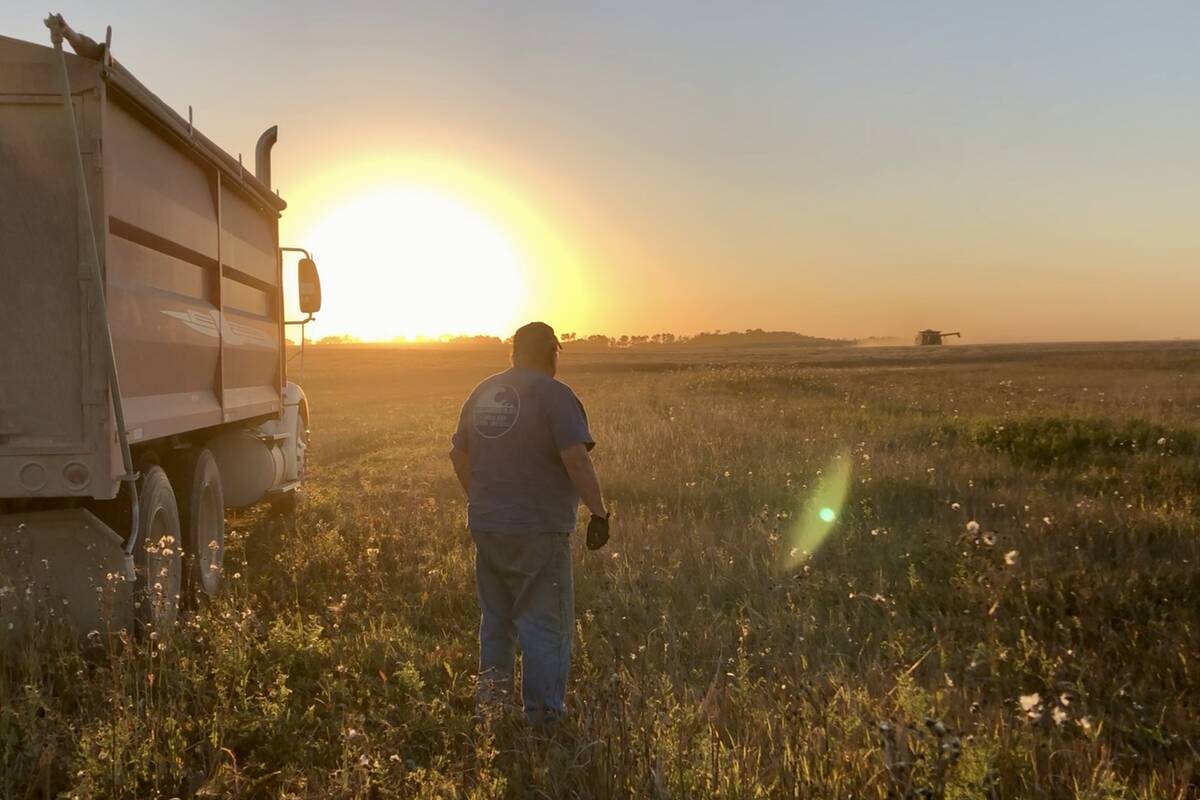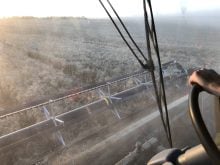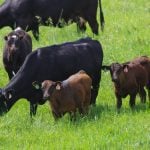MELFORT, Sask. – Cattle producers hit hard by an anthrax outbreak in northeastern Saskatchewan say the Canadian Food Inspection Agency needs better policy when it comes to dealing with the disease.
The charge comes after they say they received confusing messages about how to dispose of their dead livestock.
“Way up on top, nobody knows what they’re doing,” said Ray Tondell, who had the first confirmed case of anthrax nearly three weeks ago.
He was among several producers who complained about the process during an interview last week.
Read Also

VIDEO: Bittersweet harvest for this family farmhand
Bruce Burnett helps his brother harvest wheat and canola for the last time on the family farm in Manitoba where they both grew up.
As of July 17, 49 premises were under quarantine and 162 animals from those farms had died from anthrax.
The number of rural municipalities with quarantine areas expanded from four to nine: Kinistino, Willow Creek, Spalding, St. Peter, Ponass Lake, Humboldt, Pleasantdale, Nipawin and Torch River.
Trevor Anderson, who lost 14 cows and one bull out of the 50 cow-calf pairs and 20 heifers he had on pasture in the area, said CFIA employees dealing directly with the producers were superb.
However, he said there weren’t enough of them to handle the outbreak and he was concerned about the different messages producers received.
They were alternately advised to put panels around animals where they died, cover them with lime and bury them, put tarps over them or burn them.
“They should’ve said, ‘this is what you do,’ ” said Dylan Roberts, who lost 10 of 200 head. “They kept changing their mind.”
Ken Tegstrom, who lost four bulls, wondered why cattle that died near his yard should be left to rot and smell.
Some of the carcasses sat under tarps for three or four days in sweltering heat. Moving them later was difficult because they had decomposed to the point of falling apart.
CFIA veterinary program specialist Sandra Stephens said Canada has years of experience dealing with anthrax and a procedure has been in place for many years.
She said samples must be taken from carcasses before they can be buried or burned. Disposal, preferably by burning until the carcass is reduced to ash, should be supervised.
“Until someone could get out to supervise … we had asked them to tarp,” she said July 17. “It’s possible (the carcasses) were there for quite a while.”
Producers are asked to put panels around carcasses or tarps on top to prevent scavenging. Normal decomposition will destroy the vegetative form of the bacteria that causes anthrax spores, Stephens said, but spores will be released if a farmer or scavenger opens a carcass.
“We really do emphasize to people not to open carcasses.”
Stephens said she could understand why farmers felt they were receiving mixed messages.
“It is a fairly tense period of time,” she said, and everyone is under stress.
She added that having so many cases at one time put pressure on CFIA to come up with enough manpower.
As of July 17, CFIA had supplied the vaccine for and applied it to more than 2,000 animals in the herds that had positive tests. Farmers and local veterinarians have also vaccinated more than 6,000 others.
She said reports of vaccine shortages are inaccurate because the manufacturer has an ample supply.
The problem some ran into was that local clinics ran out. Clinics usually order only as much as they think they will need for a period of time because the vaccine will expire.
Anthrax has never been reported in the area before and supplies were limited.
The only manufacturer is in Colorado and receiving additional vaccine in the quantities required took time, although Stephens said a shipment did come in overnight one day last week.
She also said that in the case of an environmental disease such as anthrax, producers are responsible for carcass disposal, not CFIA. They receive an indemnity of $500 per head for cattle, $350 for horses and $50 for sheep to cover some of those costs.
However, producers said they were told differently.
“Several times CFIA assured us we would not have to deal with the carcasses,” Roberts said.
Instead, producers ended up doing most of the work themselves, including burning the carcasses and vaccinating their other livestock.
“They got involved because they had to, because it’s reportable,” Jody Tondell said of CFIA. “We felt we were out there swimming on our own.”
The Tondells lost three of their four herd sires and 10 cows.
“And we don’t know if we’re done yet,” Jody said.
They are also concerned about the way CFIA employees vaccinated cattle. Producers suggest each animal should have received a clean needle to prevent the disease from spreading.
As well, they question the quarantine signs that went up nearly two weeks after the first case.
Still, each of them has a good story to tell about saving animals that appeared to be at death’s door and the co-operative spirit that brought neighbours together.
Friends and relatives cut grass, weeded gardens, looked after children and donated food.
Judy Tondell, Ray’s wife and Jody’s mother, is a former public health nurse who organized producers into crews that hauled wood, stacked it, burned the carcasses and disinfected the area.
As they talked on the Tondell deck, which has become a gathering spot during this hectic time, a neighbour came by asking if anyone had seen anthrax symptoms in a horse.
Within minutes, he was off, along with a borrowed dose of penicillin and a volunteer to administer it.

















